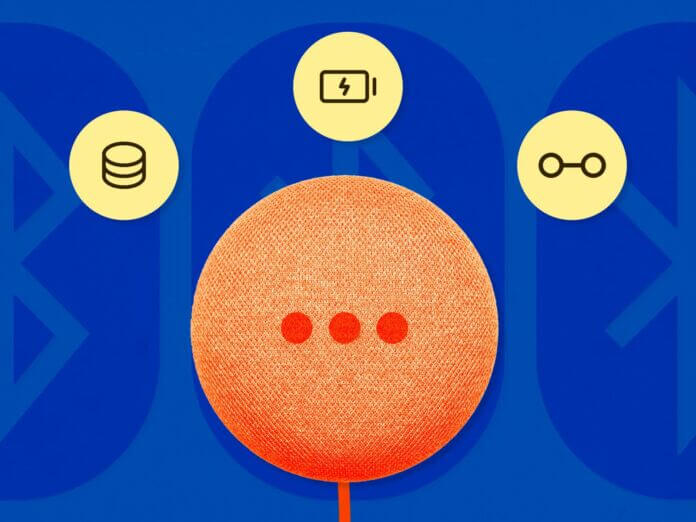
There’s a reason the market for Bluetooth Low Energy (BLE) devices is projected to grow by 300 percent through 2026. Actually, there are a few reasons. The BLE protocol delivers low power consumption, high interoperability, and strong features. It’s ideal for handling the data needs of most battery-powered IoT products.
“The BLE protocol delivers low power consumption, high interoperability, and strong features.”
That doesn’t mean every BLE development project is the same—not by a long shot. There’s a lot of variety in the field of consumer IoT, which includes everything from fitness trackers to smart home gadgets to life-saving medical devices. But despite this diversity, the products that really take off have one thing in common: They offer reliably great user experiences.
That means seamless connections and intuitive interfaces. Successful IoT products simply work, and that’s table stakes for any IoT innovation. So how do you deliver the user experiences that lead to success?
Ask developers this question and they’ll say something like, “We’ll optimize the software.” That leads to another question: What exactly are you optimizing for?
The detailed answer will depend on what you’re building. A unique product requires a unique BLE configuration. That said, BLE technology allows software developers to optimize for a common cluster of priorities. Here are the three most important—followed by the simplest way to achieve perfect balance between them when optimizing Bluetooth Low Energy.
The 3 Most Important Optimizations for BLE Products
Creating a great user experience for your customers is a balancing act between a few priorities. Emphasize one, and you have to give a little on the next. Later, we’ll discuss a solution for optimizing your software—both on the device and in your mobile app—specifically for your product. First, though, here are three crucial categories of optimization for any BLE project.
1. Power Optimization
The Bluetooth Low Energy protocol dates back to 2010, when the Bluetooth Special Interest Group released Core Specification 4.0. As the name implies, the then-novel radio technology was designed to go easy on batteries. That’s still true today.
That said, the embedded software on your device can be tweaked to prioritize low power consumption. Optimizing for other priorities, on the other hand, will pull more out of batteries.
If battery life is particularly important for your product’s users, prioritize power optimization.
2. Throughput Optimization
Most wearable IoT devices don’t need to send a huge amount of data. A Fitbit’s data transfer rate is measured in bytes, for instance. That allows the system to prioritize other things, like low power consumption.
Contrast that with devices that send video, audio, or large amounts of stored data. They must prioritize throughput. Otherwise, users will have to wait to access data through a mobile app. That’s not a great experience.
If your device handles large amounts of data, prioritize high throughput optimization.
3. Range Optimization
Bluetooth was designed to create local connections without intermediary networks. In other words, the sending device and the receiving platform must be pretty close to one another. Bluetooth Low Energy serves the same purpose.
That said, BLE technology does allow you to extend a device’s connectable range—at the cost of power consumption, of course. Optimizing for range also helps products cut through the “noise” of other wireless devices.
Products that operate over longer distances, or in noisy wireless environments, work best when they’re optimized for range.
Looking over this list, you might notice two things. First, security seems to be missing. That’s because security is essential for every product—and it’s built into the BLE tech stack. Of course, you must configure your security settings appropriately, but that goes beyond the scope of this article. Here, we’re more concerned with the user experience.
Secondly, you might complain that your product needs different optimization priorities at different times. You may wish to optimize for low power most of the time, then switch to a high-throughput optimization while syncing devices, for example.
That’s very possible with BLE. But it isn’t easy without a little help.
Solving the Challenge of BLE Optimization
The BLE tech stack won’t be familiar to most developers. To successfully manage optimizing Bluetooth Low Energy, you have to understand BLE’s unique connection parameters. In other words, BLE software isn’t optimized by default, and it takes a lot of specialized knowledge to deliver the right priority when your device needs it.
To further complicate matters, developers on the mobile app side must understand the idiosyncratic ways iOS and Android interact with BLE, and there’s no textbook on the subject.
Your team could absolutely develop this expertise, but that would boost R&D costs and extend your product’s time to market. Luckily, there’s another solution: Middleware platforms that handle the complexities of BLE development, so you can focus on creating great user experiences.
Bluetooth Low Energy middleware platforms offer pre-optimized settings, as well as seamless dynamic shifting between the priorities listed above. They translate BLE terminology into recognizable, English-readable code. In short, they allow developers who aren’t BLE experts to build systems as if they were—including a simple, balanced approach to optimization.
If you’re building the next great IoT wearable—or planning to add IoT functionality to your existing product lines—optimize your BLE system the easy way with a BLE middleware platform.
Tweet
Share
Share
- Connectivity
- Bluetooth Low Energy
- Consumer Products
- Connectivity
- Bluetooth Low Energy
- Consumer Products
